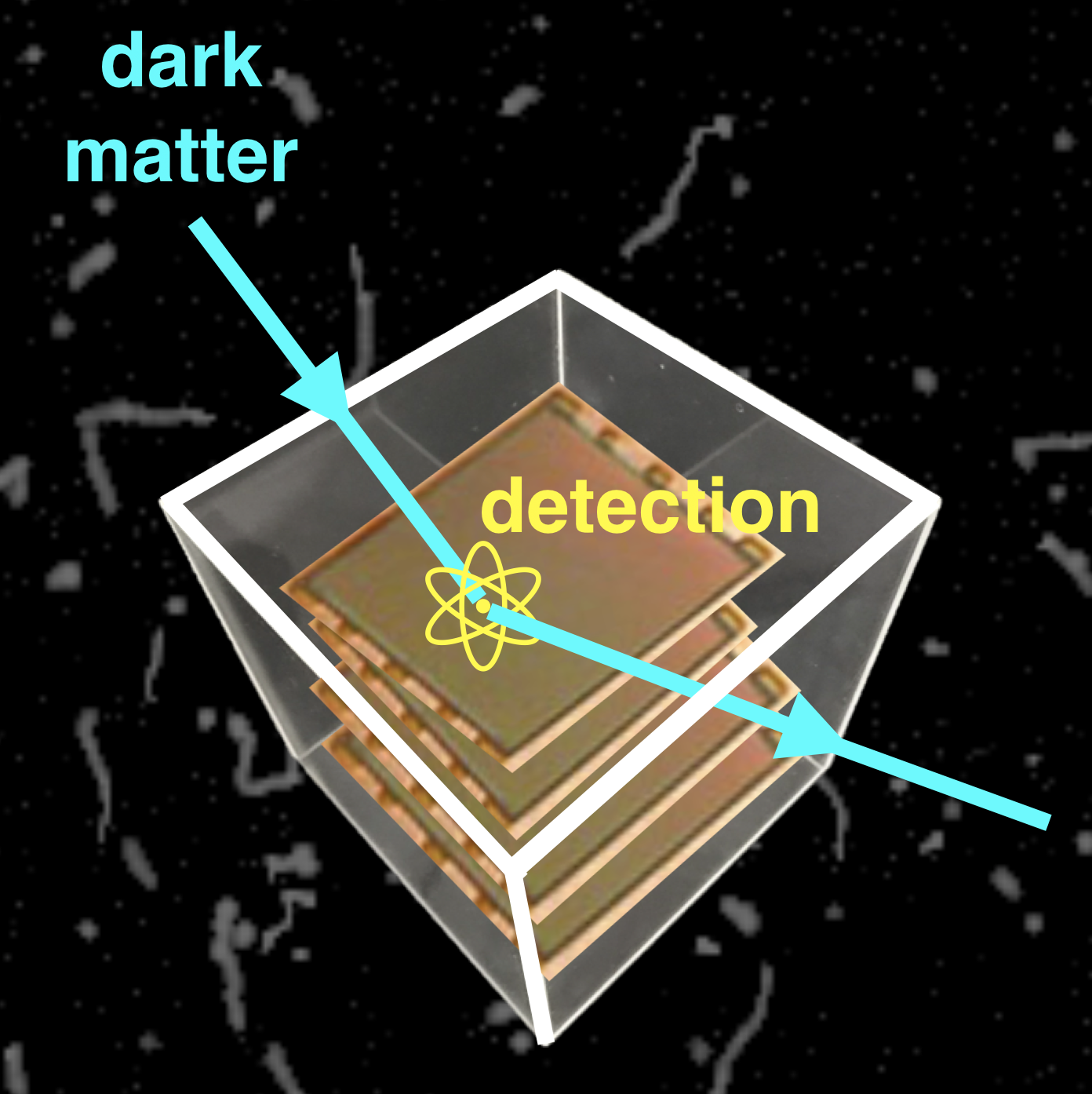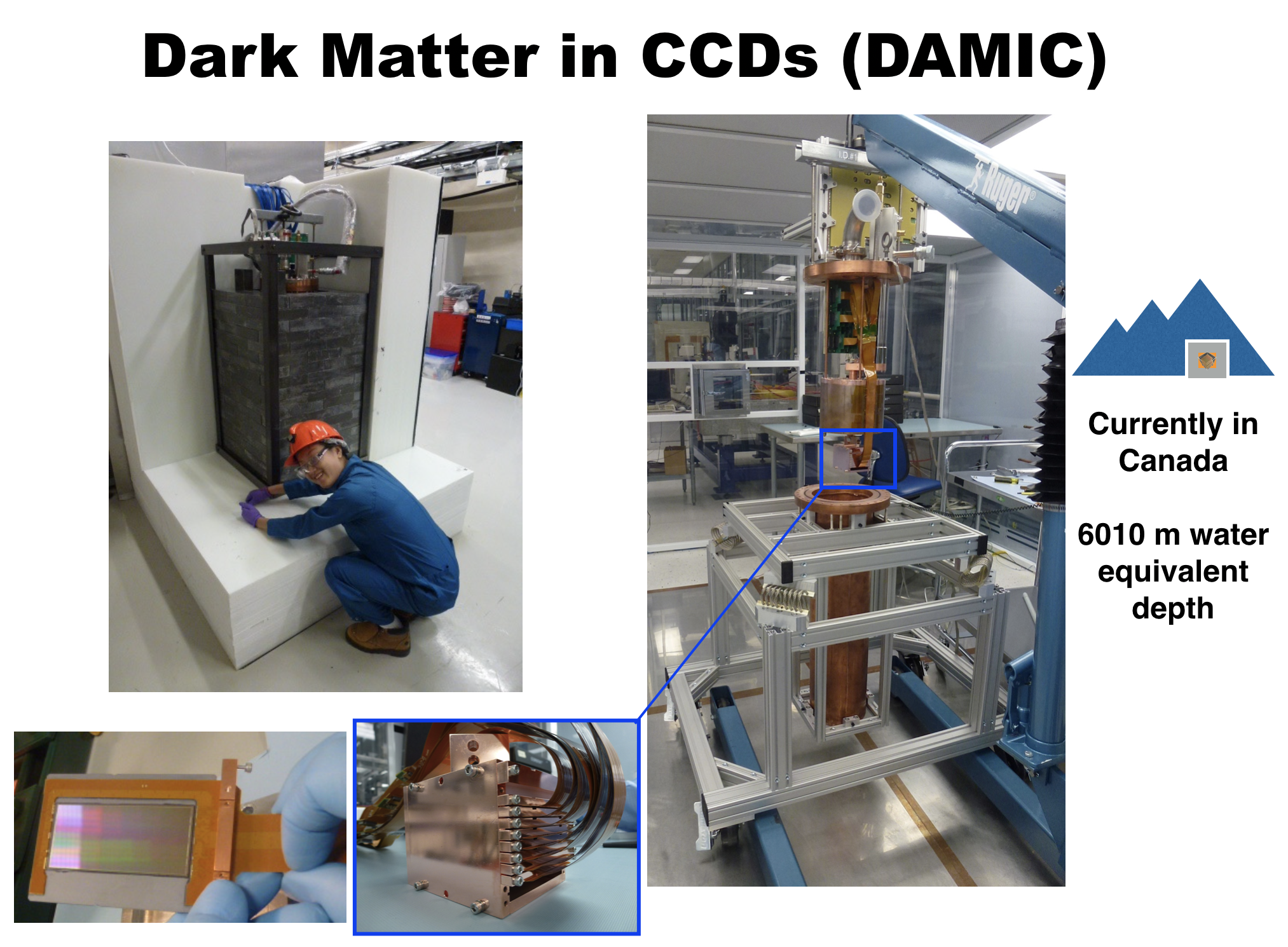Detecting dark matter
Where is dark matter ?
Since dark matter is found in young and old galaxies, we know a few things about the particles that comprise it.
- Dark matter must not be fast enough to escape. That sets a limit on its velocity of about 1/1000th the speed of light.
- Dark matter should fit in a galaxy. This puts a constraint that its wavelength should not be bigger than a galaxy.
- Based on how fast stars the Milky Way move, we can estimate the density of dark matter where we are. The density is equivalent to a mass of 1/3 of a proton per cubic centimeter.
For instance, if dark matter had a mass the same as a proton, about a million dark matter particles would stream through a liter of water per second. But don't worry, we still have never observed any interaction between dark matter and matter ! (But we hope to !)
DAMIC (Dark Matter in CCDs)
If dark matter is steaming through the earth, we need a very sensitive detector to measure its interactions.
The DAMIC experiment is designed to detect several potential types of dark matter spanning more than 7 orders of magnitude in mass.
- It can detect the weak interactions of dark matter.
- It can detect the electromagnetic interactions of hidden dark matter.
DAMIC status
- DAMIC@SNOLAB has been running in Canada, 2 km underground in a mine, since 2014, and produced a number of interesting results.
- We are currently designing a new phase of DAMIC, called DAMIC-M, at Modane Laboratory in France, inside a mountain. DAMIC-M should be partially operational in 2020, and fully operational in 2024.
DAMIC-M
DAMIC-M will probe, for the first time, several classes of predicted dark matter that have specific rates and masses.
What's so good about DAMIC-M ?
- We will probe energies 10 times smaller than DAMIC@SNOLAB, using a new, demonstrated CCD technology, called skipper CCDs. We have some of these in the lab and our testing them now.
- The backgrounds in the detector will be 50 times smaller, meaning that we can detect a much smaller rate dark matter signal. This lower background comes from more careful production and handling of detectors and shielding.
- The total mass of the detector will be 10 times more massive than the previous detector. The CCDs will be the biggest ever produced, each with an area of 9 x 9 cm2 and a thickness of 675 um, and consisting of 36 million pixels.
More information about DAMIC-M.
DAMIC publications
New ! ( July 2019 ) : Constraints on Light Dark Matter Particles Interacting with Electrons from DAMIC at SNOLAB
First Direct-Detection Constraints on eV-Scale Hidden-Photon Dark Matter with DAMIC at SNOLAB
Search for low-mass WIMPs in a 0.6 kg day exposure of the DAMIC experiment at SNOLAB
Direct Search for Low Mass Dark Matter Particles with CCDs
A Measurement of the Ionization Efficiency of Nuclear Recoils in Silicon
The DAMIC-100 dark matter detection experiment with CCDs at SNOLAB

